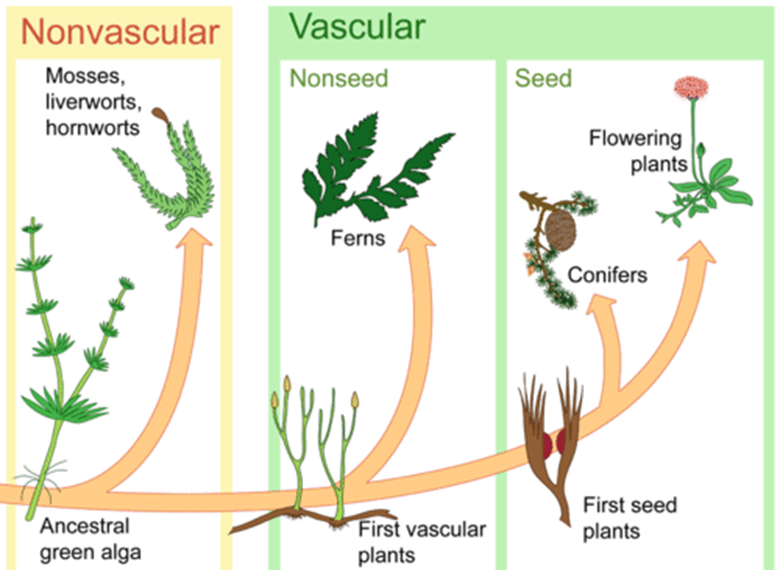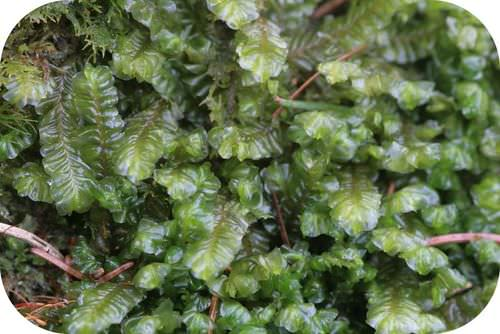?How did plants evolve

Modern classification systems, based on molecular evidence, divide organisms into three groups: Bacteria, Archaea, and Eukarya. The plant kingdom falls within the scope of eukaryotes. Plants are multicellular organisms that have adapted to life on land. The vast majority of them are capable of carrying out the process of photosynthesis, and they are not the only ones in this ability. There are some unicellular and bacteria that have the ability to photosynthesize.
Plants are thought to have evolved from a class of green algae called charophytes, which live in fresh water. There are two groups of these green algae that resemble early plants (bryophytes) that lived on land in several ways, including the structure of chloroplasts and gametocytes, and the way they divide in the process of mitosis.
Plants are classified into two main groups: Bryophytes, or non-vascular plants, and vascular plants (Tracheophytes). Both groups have multicellular embryos, which indicates that they are two groups that are evolutionarily related and distinct from green algae. Therefore, true plants are referred to as “plants.” Embryophytes) for that trait. Bryophytes consist of Liverworth's, Hornworth's, and Mosses, and they do not contain vascular tissue.
Vascular plants, which include ferns, gymnosperms, and angiosperms, have specialized vascular tissues, xylem and phloem, whose function is to transport water, sugars, and minerals throughout the plant body.
The oldest vascular plants appeared in the middle Silurian period (439-409 million years ago), while the oldest moss plants appeared in the Devonian period (409-354 million years ago). However, most scientists believe that the appearance of bryophytes preceded the appearance of vascular plants, and that the oldest bryophytes have not been found because they fossilize poorly compared to vascular plants. The latter view is supported by several pieces of evidence; These include phenotypic characteristics, ultrastructural characteristics visible under an electron microscope, and molecular evidence through gene nucleotide sequences.

Bryophytes are plants that live on land, and because their cell walls are devoid of lignin, they rely primarily on turgor pressure in their cells to stay upright in the air, and as a result, they grow to limited lengths. Among the bryophytes, Liverworth appears to be closest to the earliest land plants, since, unlike Hornworths, mosses, and all vascular plants, it does not have stomatal openings. The fact that stomata appeared for the first time in spores and mosses is evidence of the evolution of vascular plants from one of these two groups, and it appears that vascular plants are closer to mosses than to spores, because mosses have food-carrying cells called leptoids and water-carrying cells called hydroids. Hydroids are similar to the phloem and xylem tissues in vascular plants.
The first detailed fossils of a vascular plant appeared in rocks from the Middle Silurian period, 425 million years ago. The oldest specimens are of a plant called Aglaophyton, which contains conductive cells similar to the hydroids of mosses. These ancient plants (called prototracheophytes) may be an evolutionary link between bryophytes and true vascular plants. Early vascular plants had two features that enabled them to live on land: The first is: its vascular tissues transport sugars, nutrients, and water more efficiently than the transport cells in moss plants, and the second: its development of the ability to build lignin, which provides rigidity to the cell walls of the transport tissues. These two features allowed vascular plants to grow taller than their lignin-free bryophyte predecessors, and as a result they were less dependent on the moist environment needed to generate turbulent pressure in the cells.

Vascular plants consist of three groups: seedless, angiosperms, and gymnosperms. Since the first appearance of vascular plants was in the Silurian era, the fossil record has shown three basic evolutionary transformations that occurred in these plants. In each evolutionary period, the group that was dominant before the transformation is largely replaced by another group, and the latter is dominant after the transformation.
The first transition occurred in the Devonian period, approximately 375 million years ago. Before this time, vascular plants were simple, seedless, and most are now extinct, while one of those phyla (phylum Psilophyta) still has two genera alive now, one of which is a herbaceous plant that lives In greenhouses it is called Psilotum. From the late Devonian period until the end of the Carboniferous period (290 million years ago), complex seedless plants prevailed. The second major transition is the decline of several phyla of seedless plants at the end of the Iron Carboniferous and their replacement by gymnosperms at the beginning of the Permian.
Gymnosperms dominated the Earth for the next 200 million years, until they began to decline and were replaced by angiosperms in the middle Cretaceous period. A group of gymnosperms, the conifers, survived that decline and are still abundant. However, angiosperms have been the most diverse and abundant on Earth for the past 100 million years.

Angiosperms (flowering plants) appeared in the fossil record about 130 million years ago, and 90 million years later they became dominant on the planet. Charles Darwin considered the sudden appearance of the angiosperms an “odious mystery,” and scientists debated the origin of this group for several years. Comparative studies of living species of angiosperms have suggested that they evolved from the phylum Gnetophytes, which contains only three living genera, and its plants are rather strange, and some studies of the nucleotide sequence of genes It indicated the evolutionary connection between angiosperms and gnats on the one hand, and between the two and an extinct group of gymnosperms on the other. While the latest molecular studies indicate that gentians are more closely related to conifers than to angiosperms.
Doubt was raised in 1998 following the discovery of an angiosperm-like fossil estimated to be 145 million years old about whether the angiosperms are descended from the gnats or from an extinct group of gymnosperms? However, the available information about the origin of the angiosperms is still current since Darwin described it as somewhat of a “mystery”!
Source: websites

